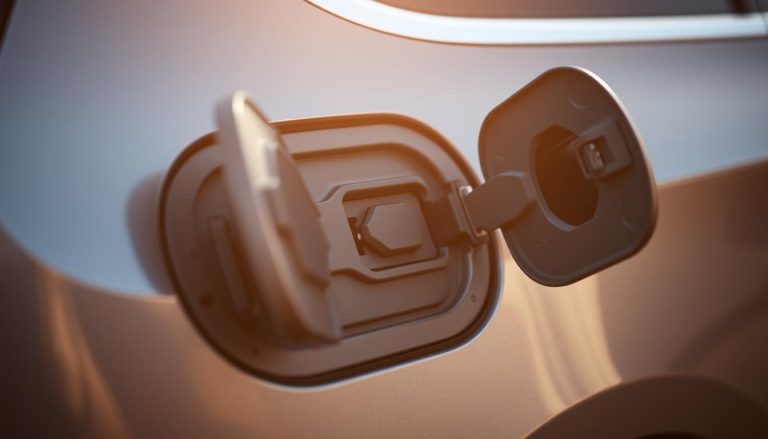This short guide tells U.S. owners exactly what to know about engine oil and service for the 2023 Subaru Crosstrek. It sets expectations for oil amounts, specs, and simple checks so you can maintain performance and reliability.
The typical fill with a new filter is about 4.6–4.7 quarts of 0W-20 full synthetic for most models. The 2.0L engine usually lists 4.6 quarts, while some listings show 4.7. A 2.5L variant is closer to 4.4 quarts.
Use oil that meets API SN or ILSAC GF‑5 standards to protect the engine across U.S. climates. Routine service intervals run 7,500–10,000 miles or yearly, with shorter spans for severe driving.
This guide previews how to check level with the dipstick, swap the filter, torque the drain plug, and confirm the final level after the first start. It also covers cost ranges and trusted filter choices so you can plan the job confidently.
Key Takeaways
- Most models take ~4.6–4.7 quarts with a new filter; check for small variance after filling.
- Choose 0W-20 full synthetic meeting API SN/ILSAC GF‑5 for best protection.
- Service intervals typically run 7,500–10,000 miles; shorten under severe use.
- Follow dipstick checks on level ground and verify level after a warm shutdown.
- Expect modest parts costs; use reputable filters like Genuine, Mobil 1, or Royal Purple.
Quick Overview: What Your 2023 Subaru Crosstrek Engine Needs Right Now
Start by confirming the right oil grade and how much your engine needs before you change it. For most U.S. models, the quick spec is 0W-20 full synthetic that meets API SN / ILSAC GF-5. That is the recommended oil Subaru calibrates for the engine.
Practical fill target with a new filter is about 4.6–4.7 quarts. After refill, make sure to check oil after the first start and top to the dipstick’s full mark only.
Confirm whether your vehicle has the 2.0L or 2.5L engine so you can fine-tune the final top-off. Change synthetic oil every 7,500–10,000 miles or yearly, and shorten intervals for severe duties.
Always inspect the oil filter, drain plug, and gasket during service. Use a name-brand filter like Genuine Subaru, Mobil 1, or Royal Purple to keep filtration and flow optimal.
| Item | Spec / Note | Ballpark Cost (US) |
|---|---|---|
| Recommended oil | 0W-20 full synthetic (API SN / ILSAC GF-5) | $51–$67 |
| Typical fill (with filter) | 4.6–4.7 quarts (2.0L); 4.4 quarts for 2.5L | N/A |
| Filter | Genuine, Mobil 1, Royal Purple recommended | $10–$13 |
| Service interval | 7,500–10,000 miles or annually | N/A |
2023 Subaru Crosstrek Oil Capacity: An In-Depth Explanation
Expect a small spread in fill volume—roughly 4.6 to 4.7 quarts—when you refill with a new filter. Residual fluid in galleries and the filter design explain this variance.
Exact engine oil amounts
The 2.0L FB20 commonly needs about 4.6 quarts with a new filter. The larger 2.5L FB25D typically runs closer to 4.4 quarts. These differences matter when you perform an oil change.
Recommended type and why it matters
Use 0W-20 full synthetic that meets API and ILSAC specs. It helps with quick cold starts, shear stability at high temp, and fuel efficiency Subaru engineers expect.
How this year compares to nearby models
The following model year lists 4.7 quarts, so owners should still check the dipstick after a warm restart. Add oil in stages, re-check level, and stop at the upper mark to avoid overfilling.
- Record how much you poured for next service.
- Proper fill preserves oil pressure and helps meet the 7,500–10,000 miles service interval.
Why Correct Oil Capacity Matters for Engine Health and Performance
Keeping the correct oil level is one of the simplest ways to protect your engine and avoid costly repairs. Proper volume keeps moving parts bathed in oil so friction, heat, and wear stay low.
Low oil starves bearings, cams, and timing components. That raises friction and temperature and can trigger oil pressure warnings or knocking sounds.
Risks of a low level
- Increased friction and rapid wear of internal parts.
- Warning lights, ticking noises, rising temps, and loss of performance.
- Possible bearing or cam damage if left unchecked.
Risks of overfilling
Too much oil causes aeration as the crank churns the fluid. Foam cuts film strength and may cause intermittent pressure loss.
Elevated crankcase pressure can force oil past seals and gaskets, leading to leaks and long-term reliability issues.
“Always follow the manufacturer’s fill guidance and verify the level on flat ground after a warm shutdown.”
When you service the 2023 subaru crosstrek, add oil in small amounts, make sure to check oil after the first start, and replace the filter each time. If you use conventional oil, plan slightly shorter intervals than with quality synthetic.
How to Check Oil Level on a Subaru Crosstrek (Step-by-Step)
A proper oil-level check is a short task that prevents long-term engine damage. Follow these steps to get an accurate reading and top off safely.
Prep and tools
Gather: a clean lint-free cloth, a funnel, and the correct 0W-20 full synthetic engine oil. Wear gloves and keep a drip rag handy to protect paint and trim.
Accurate reading procedure
Park the vehicle on a level surface. Run the engine until warm, then shut it off and wait 10–15 minutes so oil drains back to the pan.
Remove the bright-handled dipstick, wipe it clean, fully reinsert, then withdraw and read the oil level between the low and full marks.
Interpreting marks and topping up
If the level is low, estimate how many ounces or fractions of a quart are needed to reach the full line. Add oil in small increments through the fill cap using a funnel.
Wait one minute after each top-up, then re-check the dipstick to avoid overfilling. Small variations in drain time, filter size, and residual oil mean you should always confirm the level.
| Step | Action | Why it matters |
|---|---|---|
| Prep tools | Cloth, funnel, correct 0W-20 synthetic | Prevent contamination and spills |
| Warm shutdown | Park level; wait 10–15 minutes | Ensures accurate oil level reading |
| Dipstick method | Wipe, reinsert, withdraw to read | Shows true oil level between marks |
| Top-up routine | Add small amounts, re-check | Prevents overfill and aeration |
If the oil looks dark and gritty or smells burnt, plan a change instead of repeated top-offs.
Log the date and mileage after checking so you can spot trends in consumption. Make sure use of the correct viscosity and certification is maintained to match the engine’s needs and to protect performance.
DIY Crosstrek Oil Change Guide: Drain Plug, Old Oil, and Filter
Doing your own oil change gives you control over parts, fluids, and final checks. Follow a clear checklist and work methodically to avoid common mistakes.
Materials checklist
- 0W-20 full synthetic that meets API SN / ILSAC GF‑5
- New compatible oil filter and a new crush washer (if required)
- Drain pan, correct wrench for the drain plug, gloves, rags
Steps to change oil
- Warm the engine briefly so oil thins, then secure the vehicle on level supports.
- Place the drain pan, remove the oil drain plug, and let the old oil drain fully.
- Remove the old oil filter, confirm the old gasket came off, then lightly oil the new filter gasket and install by hand.
- Clean and reinstall the drain plug with a new crush washer if needed; torque per spec and avoid over-tightening.
Refill and verify: Add about 4.6–4.7 quarts of synthetic oil, start the engine briefly, shut down, wait, then check the dipstick and inspect for leaks around the filter and drain plug.
Capture used oil and the old oil filter in sealed containers and recycle them at an authorized drop-off. Note mileage, date, brand, and exact quarts used for the next oil change or warranty records.
| Item | Spec / Note | Ballpark Cost (US) |
|---|---|---|
| 0W-20 synthetic | API SN / ILSAC GF‑5 | $51–$67 |
| Oil filter | Genuine/Mobil 1/Royal Purple recommended | $10–$13 |
| Drain plug torque | Use manufacturer torque spec; do not over-torque | N/A |
Choosing the Right Oil and Filter for Your 2023 Subaru Crosstrek
Selecting certified synthetic and a trusted filter prevents premature wear in tight-clearance engines. Use 0W-20 full synthetic that meets API SN Resource Conserving and ILSAC GF‑5 (or SN+) to match manufacturer targets.
Synthetic vs. conventional: protection, intervals, and climate
Synthetic oil offers superior cold-flow at low temps and stronger film at high heat. That means easier cold starts, less deposit formation, and extended service intervals under normal driving.
Conventional oil can work as a short-term fallback. Return to certified synthetic at the next change to preserve performance and fuel economy.
Certifications to look for
Always check labels for API SN “Resource Conserving” and ILSAC GF‑5. These confirm the right additives and viscosity stability for modern boxer engines.
Recommended filter options
Choose quality filters like Genuine Subaru, Mobil 1, or Royal Purple. A good filter holds contaminants and often includes an anti-drainback valve to protect bearings and cam phasers.
- Buy quarts to match your usual refill and keep a small reserve for top-offs.
- Shorten intervals for frequent short trips or extreme climates.
- Keep receipts and part numbers in your service log for warranty and repeat purchases.
Using the right oil and filter improves noise, smoothness, and fuel economy while protecting engine internals.
Service Intervals and Driving Conditions: When to Change Crosstrek Oil
Set a clear service rhythm so your engine stays healthy and fuel economy holds steady.
Suggested interval with synthetic oil
Use synthetic oil and plan a regular oil change every 7,500–10,000 miles or about once a year under normal driving. This schedule preserves the engine and keeps performance consistent.
Always check oil between services, especially before long trips. Many owners note they top off small amounts rather than wait for the next scheduled change.
When you should shorten intervals
- Frequent short trips and cold starts that never fully warm the engine.
- Extreme temperatures, heavy towing, or long idle periods.
- Dusty roads, stop-and-go delivery duty, or repeated hard acceleration.
Pair each oil change with a new filter. Confirm the drain plug area is dry after the service to catch loose washers or torque issues early.
Many owners record using about 4.6–4.7 quarts at each change—log the exact quarts and filter brand for your records. A steady maintenance rhythm protects the engine and helps maintain resale value.
Tip: If you use conventional oil, shorten intervals; synthetic oil lasts longer under normal conditions.
Finding the Crosstrek Oil Drain Plug and Dipstick for Faster Maintenance
Knowing exactly where the drain plug and dipstick sit saves time and reduces mess during service. Work methodically and gather a socket set, drain pan, and a small funnel before you start.
Drain plug location and access at the oil pan
The oil drain plug sits at the bottom of the engine oil pan and is reached from beneath the vehicle. Make sure you have the correct socket and enough room for your drain pan.
Tip: The splash shield may need loosening for faster access. Inspect the plug and crush washer for wear and replace the washer to avoid slow weeping after reinstalling the plug.

Dipstick location, bright handle, and best practices
The dipstick has a bright handle near the fill cap—remove it, wipe it clean, fully reinsert, then pull again to read an accurate level. Add fluid in measured steps, aiming for about 4.6–4.7 quarts, then verify the final reading after a warm restart.
Wipe around the fill cap and dipstick tube to keep dirt out. After your first short drive, shine a light to check for seepage at the filter base and around the drain plug. Keep a quart of the specified fluid and a funnel on hand for quick top-ups.
Let the engine cool enough to avoid burns but stay warm enough for efficient draining of old oil.
| Item | Action | Why it matters |
|---|---|---|
| Drain plug | Use correct socket; replace crush washer | Prevents leaks and speeds safe drain |
| Dipstick | Wipe, reinsert, read | Gives accurate oil level |
| Post-service check | Inspect filter base and plug area | Catches seepage early |
Conclusion
Wrap up service work by verifying no leaks and that the dipstick reads within the full mark. For most owners of the 2023 subaru crosstrek the typical refill with a new filter is about 4.6–4.7 quarts, so make sure use of measured pour-ins and slow top-ups.
Choose 0W-20 full synthetic that meets API SN / ILSAC GF‑5 and pair it with a trusted filter each time you change. Keep service intervals near 7,500–10,000 miles and shorten them for severe duty to protect the engine.
Drain thoroughly, replace the old oil filter, add measured quarts, then start the engine briefly and always check oil level after a warm shutdown. Note the 2024 subaru crosstrek lists 4.7 quarts as a nearby reference, but confirm your model’s exact numbers.
Dispose of used oil and the old oil filter at a recycling center, and keep a service log with date, mileage, brand, viscosity, and engine oil capacity filled. Follow these steps and you’ll support long-term reliability, efficiency, and smooth performance whether you do the oil change yourself or oversee a shop job.
FAQ
What is the exact engine oil volume with filter for the 2023 Crosstrek?
The engine takes about 4.6–4.7 quarts when you replace the oil filter. Always add most of the oil, then check the dipstick and top to the full mark to avoid overfill.
Which oil type and grade is recommended?
Use 0W-20 full synthetic that meets API SN and ILSAC GF-5 specifications. This grade offers cold-start protection and long-term wear resistance suited to this engine.
How does the 2023 model compare to nearby model years in oil volume?
The 2023 model aligns with adjacent years; many model years including 2024 list about 4.7 quarts with filter. Minor differences are rare, so verify your owner’s manual for your exact engine option.
What happens if the engine oil level is too low?
Low oil can cause increased wear, overheating, loss of oil pressure and trigger warning lights. Running the engine with insufficient oil risks costly internal damage.
What are the dangers of overfilling the crankcase?
Overfilling can cause aeration, foaming, higher crankcase pressure and seal stress. That reduces lubrication efficiency and can lead to leaks or engine damage.
What tools do I need to check the oil level correctly?
Basic tools include the dipstick, a clean lint-free cloth, a funnel for topping up, and the correct bottle of engine oil. A level parking spot and the owner’s manual are helpful too.
How do I get an accurate dipstick reading?
Park on level ground, run the engine to normal temp and shut it off for a few minutes. Pull the dipstick, wipe it clean, reinsert fully, then remove it to read. Use the marks to assess level and add oil in small amounts if needed.
How should I interpret dipstick marks and top up safely?
The dipstick shows low and full or cross-hatched areas. If below the full mark, add small amounts, recheck, and stop when it reaches full. Avoid filling past the top mark.
What materials do I need for a DIY oil change on this model?
Gather 0W-20 full synthetic oil (about 4.6–4.7 quarts), a new oil filter, drain pan, socket or wrench for the drain plug, funnel, gloves, and rags.
What are the basic steps to change the oil and filter?
Warm the engine slightly, jack and secure the vehicle if needed, remove the drain plug and drain oil into a pan, replace the oil filter, reinstall the plug with proper torque, refill with oil, then run and recheck level.
How much oil should I add when refilling after a drain and filter change?
Add roughly 4.6–4.7 quarts, then check the dipstick and adjust. Small top-up amounts are safer than adding all the capacity at once.
What’s the proper way to dispose of old oil and the used filter?
Place used oil and the old filter in sealed containers and take them to a recycling center, auto parts store, or hazardous waste facility. Do not pour oil down drains or onto the ground.
Should I use synthetic or conventional oil for this engine?
Full synthetic offers better protection, longer service life, and improved cold-start performance. It supports extended intervals and is generally recommended for modern engines.
Which oil certifications should I look for on the bottle?
Look for API SN (or newer) and ILSAC GF-5 (or newer) labels. These indicate the oil meets performance and fuel-economy standards suitable for this engine.
What oil filter brands are recommended?
Genuine manufacturer filters offer reliable fit and filtering. Aftermarket options like Mobil 1 or Royal Purple are well-regarded for quality. Always choose the correct part number for your engine.
How often should I change the oil with full synthetic in normal driving?
A common guideline is every 7,500–10,000 miles or once a year, whichever comes first. Follow your vehicle’s maintenance schedule and driving conditions.
What driving habits shorten oil change intervals?
Frequent short trips, stop-and-go city driving, extreme temperatures, heavy loads, and towing increase engine stress and can shorten recommended intervals. In those cases, change oil more often.
Where is the oil drain plug located?
The drain plug sits on the oil pan under the engine. Access may require a jack or ramps on some model years. Use the correct socket and keep the drain pan ready.
How do I find the dipstick fast for routine checks?
The dipstick normally has a bright-colored handle and sits near the front of the engine. Consult the owner’s manual for an exact location and photo if you’re unsure.



